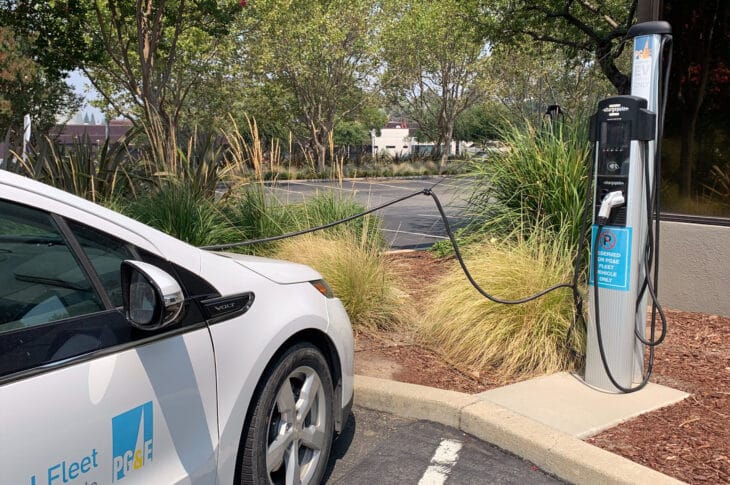Expanding Electric Vehicle Charging Options for Customers, PG&E Begins Installing EV Chargers at Schools
Today marks a significant milestone for Pacific Gas and Electric Company (PG&E), as it breaks ground on the first of potentially 130 new electric vehicle (EV) charging ports. These installations, located at 22 schools within PG&E’s service area, demonstrate a strong commitment to sustainable energy and transportation. This initiative not only supports the transition towards a greener future but also cultivates an environment of innovation and eco-consciousness amongst the younger generation.

The inaugural installation is set to take place at Eastside College Preparatory School in East Palo Alto, California. This initiative forms a crucial part of PG&E’s EV Charge Schools pilot program, designed to bridge charging gaps at key locations and support the state’s clean transportation and decarbonization objectives. The pilot will see the installation of level 2 charging stations at educational institutions and school facilities, providing staff, parents, and students with the means to charge their EVs. The availability of the charging stations will vary based on the location.
PG&E will shoulder the costs associated with purchasing and installing the EV charging equipment, networking fees at these schools, and the ongoing maintenance and operations. In an effort to ensure inclusivity and accessibility, up to 40% of the new chargers will be located in disadvantaged communities, thereby introducing EV charging options to customers who previously had limited access.
Furthermore, PG&E is committed to fostering a culture of sustainability and eco-awareness. To this end, they will develop an EV and sustainability curriculum for all schools within its service area, along with offering teacher training options. This innovative kindergarten through grade 12 curriculum will connect classroom learning to real-world infrastructure and play a significant role in promoting the awareness of clean energy transportation.
“By increasing charging access at schools, we strive to make electric vehicles a viable option for more Californians. Expanding the use of clean transportation and reducing vehicle emissions is good for our state, our customers and the environment,” said PG&E’s Aaron August, Vice President, Business Development and Customer Engagement.
Why Clean Transportation Matters
Clean transportation efforts stand at the forefront of PG&E’s Climate Strategy Report, the company’s comprehensive blueprint outlining its commitment to achieving net-zero greenhouse gas emissions by 2040. This ambitious target is set to be realized five years ahead of the state’s goal, with the company further pledging to actively remove more greenhouse gases from the environment than it emits by 2050.
PG&E envisions itself as the global model in the industry, preparing its grid to fuel a minimum of 3 million electric vehicles (EVs) by 2030. This pivotal move aims to effect a cumulative reduction of 58 million metric tons of carbon emissions. These recent commitments are a validation of PG&E’s long-standing leadership in clean transportation.
Over 420,000 EVs have been sold in PG&E’s service area, representing a significant one in six EVs nationwide. The company is keenly aware that the proliferation of EVs can substantially contribute to California’s emission reduction goals, given that transportation is the largest source of greenhouse-gas emissions in the state, accounting for nearly 40%.
Passenger vehicles alone contribute almost 29% of the state’s total emissions. However, this statistic is set to undergo a radical change. By 2035, California aims to achieve 100% sales of new passenger cars and trucks with zero tailpipe emissions.
The electricity that powers EVs in California is sourced from one of the cleanest energy mixes in the country. Remarkably, PG&E estimates that 93% of its customers’ electricity in 2021 was sourced from greenhouse gas-free resources.

